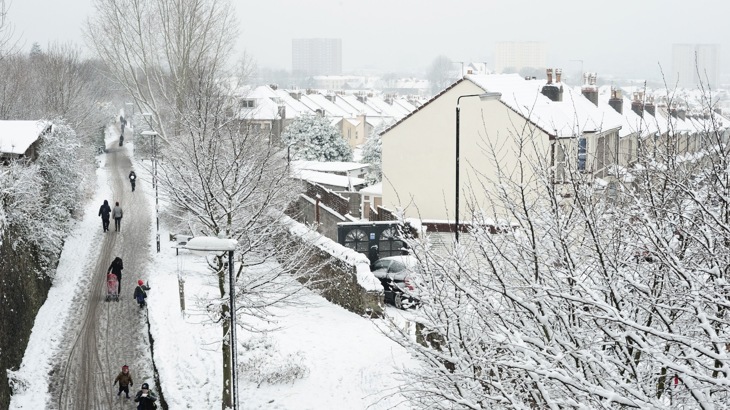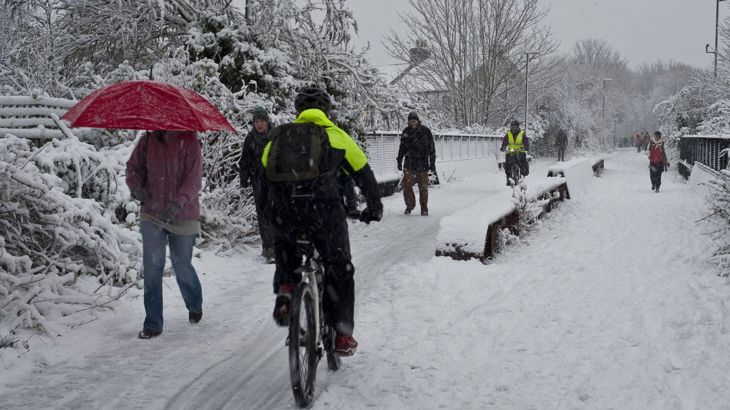Snow can make cycling quite perilous and it may be sensible to walk your journey instead. But if you’re determined to cycle, give yourself some extra time to get to your destination and have a look at these tips for cycling in the snow.

1. Check the weather forecast
Check the weather forecast before heading out the door. This will help you decide on the right clothing and to find out if ice is a threat. You may want to consider wearing a helmet in treacherous conditions.
Ice is most likely to form overnight, so be extra careful if you’re heading off to work early.
2. Think about your hands and feet
Cold hands and feet can make you feel miserable. You've probably got your winter gloves ready for action but also wear appropriate, non-slip footwear.
Not only will your feet stay dry and warm but you’re less likely to slip on your pedals or the ground when stopping.
Overshoes, thermal socks and winter boots are all a good idea.
Pack a couple of plastic bags or cling film in case it begins to snow while you're out.
If you find yourself caught short, stop at a shop, cafe or petrol station to see if they can help.
3. Use a different bike or tyres
Consider using wider or knobbly tyres, or if conditions are really icy you could even try studded tyres.
If you don’t have the option of different tyres, try running your usual ones at a slightly lower pressure.
If you’re lucky enough to have access to more than one bike, try switching to one more suitable to the weather conditions, for example, a mountain or cyclocross bike.
4. Lower your saddle
Drop your saddle a bit to lower your centre of gravity.
This will give you more control over your bike and allow you to get your foot down on the ground quickly if you slide or wobble.

If using a busy path, be aware of other users and remember it' going to take longer to slow down.
5. Consider a different route
Main roads are more likely to be cleared by cars and treated with salt.
If snow and ice are widespread, consider sticking to these roads rather than your usual route to work or school.
Please take particular care when you turn off the main road, which may be clear of ice, on to a quiet street that might not have been treated.
6. Stay out of the gutter
Puddles, which will freeze, are more likely to form in the gutter.
You’re better off staying in the centre of the lane, where cars have driven and cleared the snow.
7. Brake gently
If braking, gently apply the back brake only. Or better still, if you find yourself on the ice, completely avoid braking altogether.
Try to stay relaxed and try to pedal smoothly. Give yourself longer to slow down and stop, and remember it's going to take other people longer to slow down too.
8. Keep checking
Snow and ice can quickly build up on your bike so check that the brakes are clear and still functioning properly at various points on your journey.





